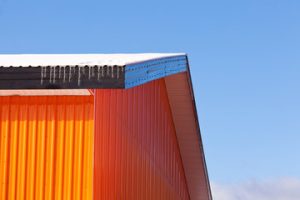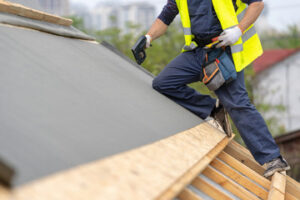Choosing the right Siding Contractors Boston MA can transform your home and increase its value, while making it easier to maintain. A good contractor demonstrates professionalism and clear communication throughout the project. They also include cleanup services in their quotes to save homeowners the hassle of managing this task themselves.

They also offer work guarantees, including product and labor warranties. Moreover, they understand local aesthetics and can recommend styles that blend well with your neighborhood.
When choosing a siding contractor, homeowners should prioritize contractors with strong local reputations and verified customer reviews. This can help them gauge a contractor’s professionalism and work quality, as well as their level of customer service (Forbes). In addition to online reviews, homeowners should ask potential contractors for references from past clients. These references can provide insight into a contractor’s professionalism and project timelines.
Homeowners should also pay attention to a contractor’s communication skills. A contractor who responds promptly to initial inquiries and provides thorough information demonstrates a commitment to customer service. This can help prevent misunderstandings and ensure that project expectations are clearly communicated throughout the process.
Additionally, homeowners should assess a contractor’s pricing transparency. A reputable contractor should be willing to discuss the cost of services and materials and answer any questions. This can help ensure that a homeowner’s budget and project requirements are aligned. Lastly, homeowners should obtain multiple quotes from contractors before making a decision. This will allow them to compare pricing and services, ensuring that they are receiving the best possible value for their money.
Choosing the right siding contractor is an important decision that can impact the curb appeal and long-term durability of a home. By evaluating a contractor’s reputation, experience, licensing, insurance, and pricing, homeowners can make an informed decision that will lead to a successful project.
When comparing potential contractors, homeowners should consider their gut instinct. A contractor who is confident in their work and provides a clear breakdown of costs will likely be more trustworthy than one who is pushy or uses high-pressure sales tactics. Additionally, homeowners should always read through the terms of a contract before hiring a contractor, as this will help to ensure that all aspects of the project are agreed upon and understood by both parties.
Experience
A siding contractor’s experience is an important factor to consider when choosing one for your project. Their expertise in the different types of siding and installation techniques helps them deliver high-quality results that provide value to your home. They can also address any unique challenges that may arise during the project, such as structural damage or weather conditions. In addition, they can help you select the right materials for your home’s unique needs and budget.
When comparing quotes, focus on the specifics of each proposal, such as scope of work, labor costs, materials, and any warranties or guarantees offered. It’s also important to consider whether the quote specifies a clear timeline for completion and the agreed-upon price. This ensures that both parties understand their responsibilities and limits the likelihood of disputes later on.
Ask your potential contractors for references and contact them to inquire about their experience working with the company. Request details about their quality of work, adherence to timelines, communication skills, and overall satisfaction with the project. This will give you an idea of how well they meet their clients’ expectations.
Finally, be sure to check online reviews for each of your prospective contractors. Look for positive and negative feedback, as well as any trends that may emerge. For example, a consistent theme of praise for punctuality and craftsmanship is a positive sign, while frequent complaints about price increases or poor workmanship should raise red flags.
Once you’ve gathered all of this information, it’s time to make a decision. Compare the contractors’ reputations, licensing, insurance, pricing, and experience, then choose the one who best fits your project goals. Once you’ve made your choice, be sure to review all of the terms and conditions in a detailed contract before beginning work. This will help you avoid any surprises and guarantee a smooth, successful project.
Licensing
A reputable siding contractor will have the proper licensing for your state or region. They will also carry liability and workers’ compensation insurance. Without these, any issues that arise during the project fall on your shoulders as the homeowner. This could lead to expensive repairs and legal complications.
A good siding contractor will provide a detailed contract that specifies the scope of work and materials used. It should also include a schedule for completion. It is best to sign the contract only after it has been carefully read and understood. If you do not understand a certain section, ask for clarification. Also, be sure to inquire about whether the contract includes a warranty for their workmanship.
Siding contractors should be willing to provide you with references from previous clients. These can give you insight into their work ethic, knowledge, and experience. Moreover, you can visit homes where the contractor has worked to see their finished work. This will help you decide if they are the right fit for your home’s siding needs.
Another important question to ask is how the contractor plans to manage unexpected challenges that may arise during the project. Their response should reassure you that they will be able to adapt their initial plan while keeping the project on track.
You should also be sure to check whether the contractor has a clean-up crew. This is crucial, as messy work can damage your home’s landscaping and other elements. A good contractor should have procedures in place to ensure that metal tools, nails, staples, and other debris are removed from your property before leaving. They should also leave your yard looking better than when they arrived.
Insurance
When evaluating potential contractors, homeowners should check whether they have the proper insurance. This includes liability and workers’ compensation insurance, which protects you as the homeowner in case any issues arise during the project. A reputable contractor should be able to provide proof of their insurance, and you may want to verify this information with the insurer directly.
Homeowners should also evaluate a contractor’s warranties, which can offer protection and peace of mind for the investment in siding installation. These include product and labor warranties, as well as manufacturer warranties. A reputable siding contractor should be able to provide detailed descriptions of these warranties, including coverage details and exclusions. They should also be able to explain how they process claims, which can help with budget management and risk mitigation (Ryan’s Roofing).
In addition to evaluating a contractor’s reputation, experience, licensing, and insurance, homeowners should also consider whether they specialize in specific types of siding materials. A specialized contractor will be more knowledgeable about the specific needs of different materials and can advise you on design trends, installation techniques, and maintenance tips. They will also be able to recommend a specific type of siding that is best for your home’s specific conditions.
Finally, homeowners should request a detailed cost breakdown and ensure that the contractor’s offerings align with their budget and project needs. Additionally, they should ensure that the contractor provides a clear line of communication throughout the project to address updates and questions promptly. This can help to alleviate stress and confusion and to ensure that all parties are on the same page. Additionally, it is a good idea to ask potential contractors about any industry awards or certifications that they have earned, as these can indicate their commitment to excellence and customer satisfaction (Angi).
Pricing
Getting quotes from several contractors is an excellent way to compare siding installation costs. Each quote should detail all aspects of the project, including labor and materials. This allows you to make an informed decision and determine which contractor offers the best value for your money. Aside from comparing prices, it’s also important to evaluate the quality of each contractor’s work. Be wary of low-priced contractors, as they may be using substandard materials or lack the proper experience to perform a high-quality installation.
It’s also crucial to consider the long-term cost of your siding, as well as maintenance costs. Some materials require a higher upfront cost but may be more cost-effective in the long run due to their durability and longevity. In addition, insulated siding can help lower your energy costs by reducing heat transfer.
When choosing a contractor, ask about their experience with specific brands and styles of siding. A knowledgeable contractor will be able to recommend options that complement the look of your home and fit within your budget. They should also be able to explain the benefits of each type of siding and provide detailed information about their products.
You should also inquire about the contractor’s licensing, insurance, and warranty policies. Make sure they are licensed to install your chosen product, and that their insurance coverage includes general liability, workers’ compensation, and property damage. Additionally, you should check if they are willing to provide you with copies of these documents.
In some cases, you will need to pay for the permits and inspections that your siding project requires. These costs can range from a few hundred dollars to a few thousand dollars, depending on the local requirements and your location.








